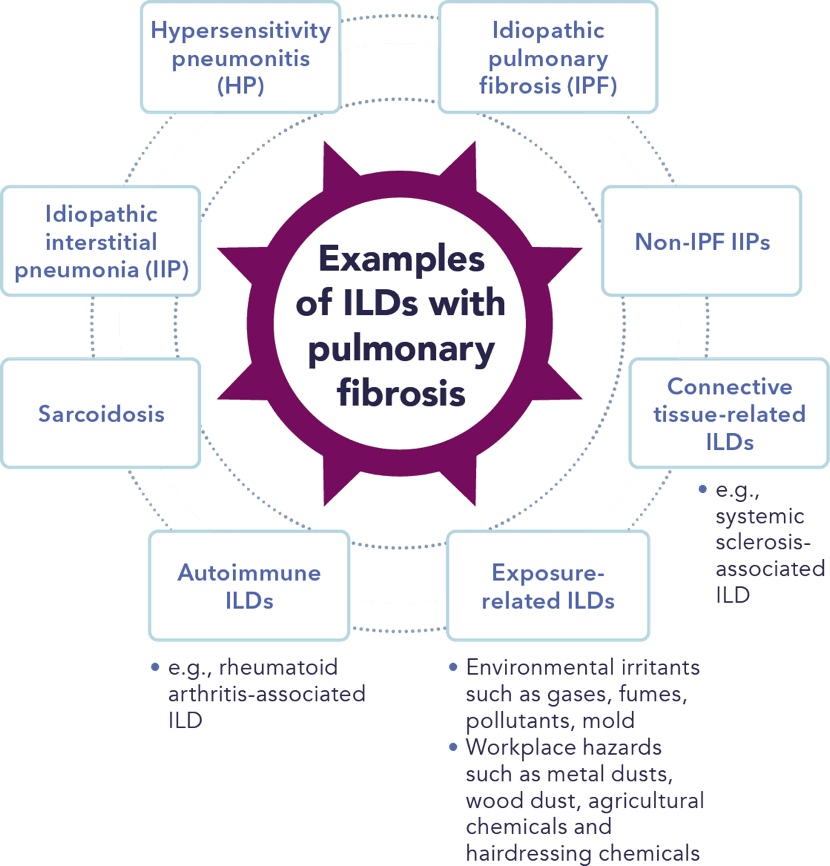
Conditions with
Pulmonary Fibrosis
There are many conditions that are associated
with pulmonary fibrosis.
There are many different conditions associated with pulmonary fibrosis. Some are referred to as interstitial lung diseases (ILDs). ILDs with pulmonary fibrosis are a challenging group of diseases that affect the interstitium of the lung (the space between the air sacs in the lung) and lead to the formation of scar tissue. The following diagram shows normal lung air sacs on the left and the thickened air sacs in ILDs on the right.

ILDs may cause scar tissue to build up in your lungs. This scar tissue is known as pulmonary fibrosis and affects the tiny air sacs and blood vessels responsible for providing oxygen to all parts of the body. In some cases, there is excessive scarring with an increasing extent of the lung lost to fibrosis and it becomes harder for oxygen to pass through the lungs into the bloodstream, which can result in shortness of breath.
There are many different ILDs, and pulmonary fibrosis is an important factor in some of them. ILDs with pulmonary fibrosis can be caused by certain medications or drugs, occupational or environmental exposure, autoimmune conditions or, many times, the cause is never known. Some of the autoimmune conditions that are associated with ILD include scleroderma, rheumatoid arthritis, sarcoidosis and Sjögren's syndrome.
Did You Know
“Auto” means self and “immune” means protection against. Together this means that the immune system acts against the person’s own body.
This is a simple diagram of how some ILDs are associated with pulmonary fibrosis.

Click here for a more detailed description of this image.
Examples of ILDs with pulmonary fibrosis
A circular image showing examples of ILDs with pulmonary fibrosis, including idiopathic pulmonary fibrosis (IPF), non-IPF ILDs, connective tissue-related ILDs such as systemic sclerosis-associated ILD, exposure-related ILDs due to environmental irritants or workplace hazards, autoimmune ILDs such as rheumatoid arthritis-associated ILD, sarcoidosis, idiopathic interstitial pneumonia (IIP), and hypersensitivity pneumonitis (HP).
Pulmonary fibrosis in patients with an ILD may be detected through multiple tests, which are required to rule out other conditions. Even when you have received a diagnosis, it’s important to remember that no two people will have the same experience with pulmonary fibrosis.
Your doctor is best able to provide guidance and support tailored to your individual situation and suggest the best approach moving forward.
